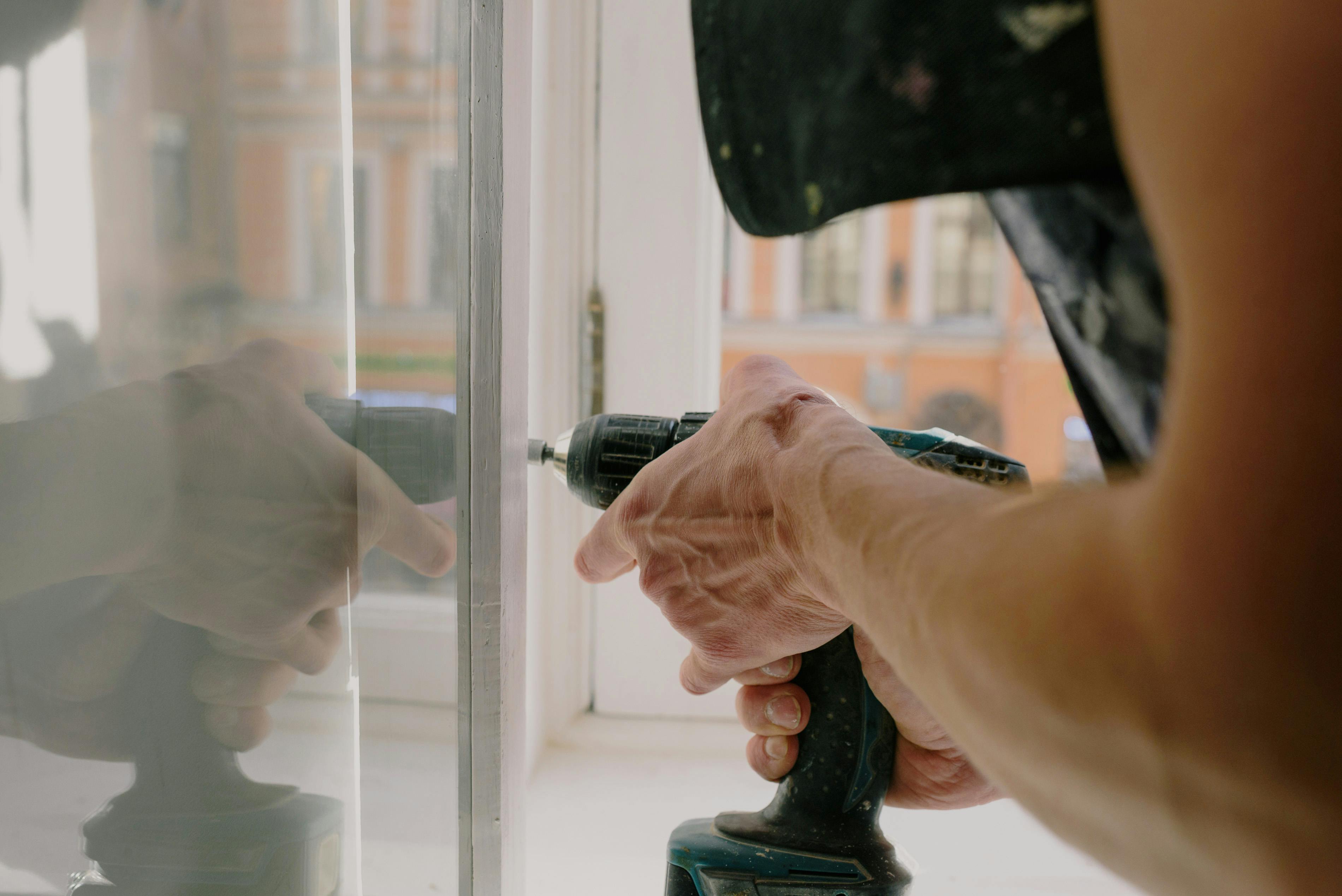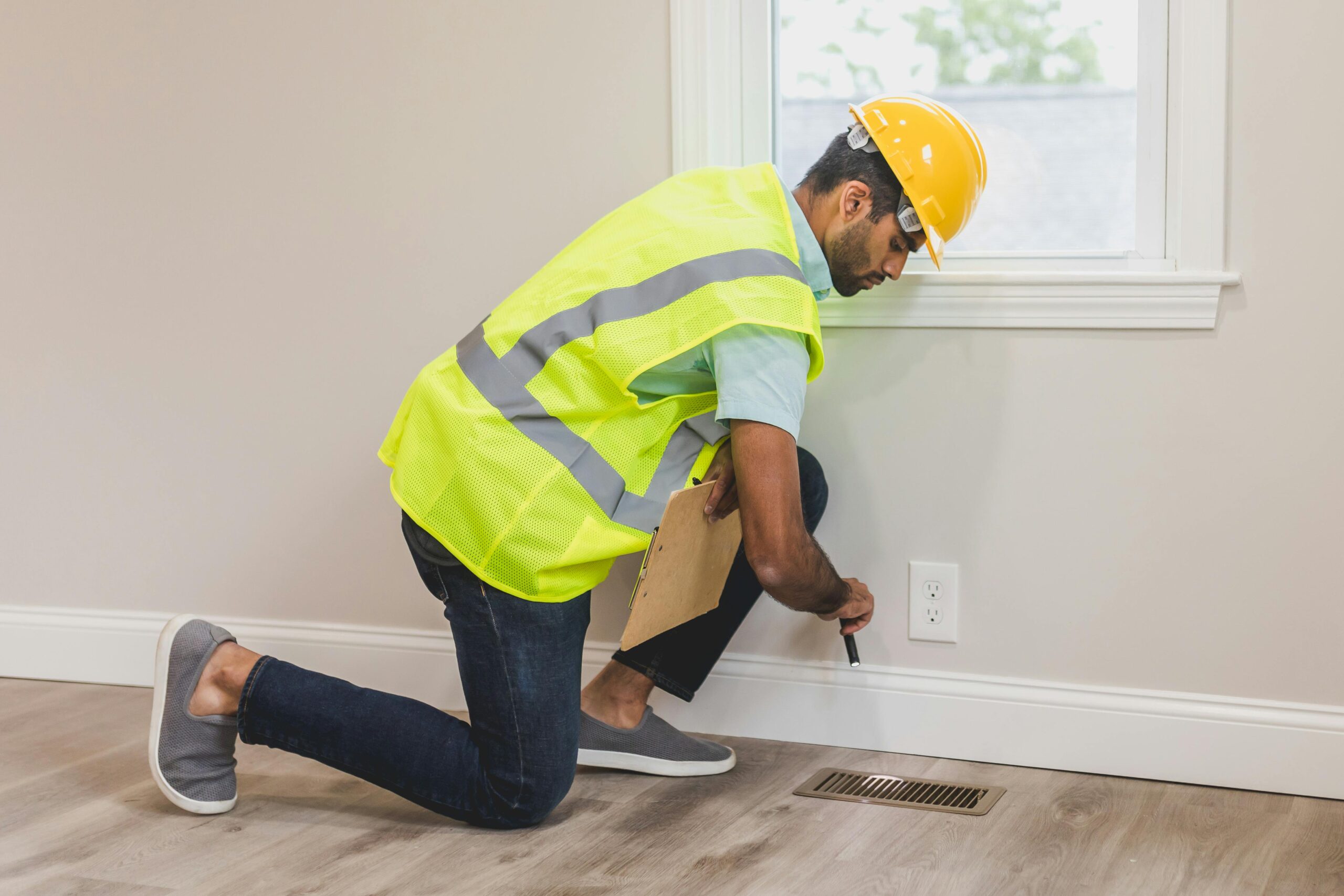Are you struggling with your Windows 11 Thunderbolt enclosure? You’re not alone! Many users face performance issues that can significantly hinder their productivity. This article will guide you through the steps to fix Windows 11 Thunderbolt enclosure problems, unlocking faster performance and enhancing your overall experience. Thunderbolt technology is designed to provide lightning-fast data transfer speeds, but sometimes, it’s not working as it should. Why let these issues hold you back when you can easily resolve them?
In this comprehensive guide, we’ll explore common issues that can arise with your Thunderbolt enclosure on Windows 11 and offer practical solutions to fix them. From driver problems to connectivity issues, there are several reasons your Thunderbolt device might not be performing at its best. Have you checked your device drivers recently? Keeping them updated is crucial for maximizing performance and ensuring compatibility with the latest Windows 11 updates.
Moreover, we’ll delve into advanced troubleshooting steps that can unlock the full potential of your Thunderbolt setup. Whether you’re using your enclosure for high-speed data transfer, gaming, or video editing, understanding how to fix these issues is essential for a seamless experience. So, are you ready to supercharge your Windows 11 Thunderbolt enclosure? Let’s dive into the solutions that can get your system running at peak performance today!
Top 7 Troubleshooting Tips to Fix Your Windows 11 Thunderbolt Enclosure Issues and Boost Performance

If you’re a Windows 11 user, you might be experiencing some issues with your Thunderbolt enclosure. This can be frustrating, especially when you rely on it for high-speed data transfer or external device connection. Fortunately, there’s several effective ways to troubleshoot these issues. Here’s the top 7 troubleshooting tips to fix your Windows 11 Thunderbolt enclosure problems and boost performance.
Update Thunderbolt Drivers Regularly
One of the first things you ought to do is check for driver updates. Outdated drivers can cause various connectivity problems. You can visit the manufacturer’s website for the latest drivers or use Windows Update to automatically search for updates.
- Go to Settings > Windows Update.
- Click on Check for updates.
- Install any available updates.
Check Thunderbolt Settings in BIOS
Sometimes, the BIOS settings can affect how your Thunderbolt devices perform. It’s a good idea to ensure that Thunderbolt support is enabled. Restart your computer and enter the BIOS setup. Look for Thunderbolt configuration options, and make sure it’s enabled.
- Restart your PC and press F2 or DEL to enter BIOS.
- Navigate to the Advanced tab.
- Find Thunderbolt settings and enable it.
Use the Thunderbolt Control Center
Windows 11 has a built-in Thunderbolt Control Center that help you manage device connections. You can check if your Thunderbolt device is recognized and troubleshoot issues directly from this tool.
- Search for Thunderbolt Control Center.
- Make sure your device is detected and listed.
- If not, try disconnecting and reconnecting the device.
Test with Different Cables and Ports
Sometimes, the issue might not be with your system but with the cables or ports. Using a different Thunderbolt cable or trying another port can often resolve connectivity issues. If possible, test your enclosure on another computer to see if it works there.
- Use a certified Thunderbolt cable.
- Switch ports to see if the issue persists.
Disable Fast Startup
Fast Startup is a feature that can sometimes interfere with Thunderbolt devices. Disabling it might help in resolving the issues. To do this, follow these steps:
- Go to Control Panel > Power Options.
- Click on Choose what the power buttons do.
- Click on Change settings that are currently unavailable.
- Uncheck the Turn on fast startup option.
Run Windows Hardware and Devices Troubleshooter
Windows has built-in troubleshooters that can help identify and fix problems. Running the Hardware and Devices troubleshooter can often detect issues with your Thunderbolt enclosure.
- Go to Settings > System > Troubleshoot > Other troubleshooters.
- Find and run Hardware and Devices troubleshooter.
Monitor System Resources
Sometimes, the performance of your Thunderbolt enclosure can be affected by high CPU or memory usage. Open Task Manager (Ctrl + Shift + Esc) and check if any processes are consuming too much resources. Closing unnecessary applications may help improve performance.
- Check for any applications that might be hogging resources.
- Close them to free up system resources.
By applying these troubleshooting tips, you can fix Windows 11 Thunderbolt enclosure issues effectively. It’s essential to keep your system updated and ensure all connections are working correctly to unlock faster performance. Regular maintenance and monitoring can prevent future issues, ensuring your Thunderbolt enclosure operates smoothly. If problems persist after trying these solutions, consider contacting customer support for further assistance.
Is Your Thunderbolt Enclosure Underperforming? Here’s How to Fix It on Windows 11 in 5 Easy Steps

Is your Thunderbolt enclosure underperforming? You might be wondering why your data transfer speeds feel slower than they should be. If you are using Windows 11, tech issues with Thunderbolt enclosures can happen more often than you think. But don’t worry! Here’s how to fix it on Windows 11 in 5 easy steps that can help unlock faster performance now.
Understand Thunderbolt Technology
First off, let’s get a bit of background on Thunderbolt. Originally developed by Intel and Apple, Thunderbolt technology allows for high-speed data transfer and video output through a single cable. There are several versions of Thunderbolt, with Thunderbolt 3 and 4 being the most commonly used in modern devices. If your Thunderbolt enclosure is not performing well, it might be due to compatibility issues, driver problems, or even simple settings that need adjusting.
Step 1: Check Your Connections
Before diving into technical settings, ensure that your Thunderbolt cable is connected properly. Sometimes, it’s just a loose cable that causing the slowdown. Make sure you’re using a high-quality Thunderbolt cable, as lower quality ones might not support the high speeds you’re looking for. Remember, not all USB-C cables are Thunderbolt cables!
Step 2: Update Thunderbolt Drivers
Keeping your drivers up-to-date is essential for optimal performance. To do this:
- Open Device Manager on your Windows 11 PC.
- Find “System Devices” and look for “Thunderbolt Controller.”
- Right-click and select “Update driver.”
- Choose “Search automatically for drivers.”
Having the latest drivers can solve many issues and enhance the functioning of your Thunderbolt enclosure.
Step 3: Adjust Power Settings
Windows 11 has various power settings that can affect performance. You might be in “Power Saver” mode, which limits performance to save energy. To switch to “High Performance” mode:
- Right-click on the battery icon in the taskbar.
- Click on “Power Options.”
- Select “High performance” as your preferred plan.
This can significantly improve the data transfer rates through your Thunderbolt enclosure.
Step 4: Enable Thunderbolt Security Settings
Sometimes, security settings can hinder performance. To check your Thunderbolt settings:
- Type “Thunderbolt Control Center” in the Windows search bar.
- Open the application and look for the security settings.
- Make sure the settings are not overly restrictive.
Having the right security settings can help you unlock the full potential of your Thunderbolt enclosure.
Step 5: Use Disk Management Tools
Finally, using Windows built-in disk management tools can help optimize your Thunderbolt enclosure. To do this:
- Type “Disk Management” in the search bar and open it.
- Check if your Thunderbolt drive is healthy and properly formatted.
- If necessary, you can perform a quick format or check for errors.
Optimizing disk performance can drastically improve speed and functionality.
Final Thoughts
If your Thunderbolt enclosure has been underperforming, these five steps can help you fix Windows 11 Thunderbolt enclosure issues. From checking connections to updating drivers, the process is simpler than you might think. With just a few adjustments and checks, you can unlock faster performance now. Don’t let slow transfer speeds hold you back; take action today!
The Ultimate Guide to Optimizing Thunderbolt Enclosures on Windows 11: 10 Must-Know Hacks

In today’s fast-paced digital world, Thunderbolt enclosures are becoming essential for anyone needing fast storage solutions. With Windows 11, many users are experiencing challenges optimizing their Thunderbolt enclosures. But don’t worry, there’s plenty of hacks to boost your performance. Here’s the ultimate guide to optimizing Thunderbolt enclosures on Windows 11, featuring 10 must-know tips to help you fix your setup and unlock faster performance now.
Understanding Thunderbolt Enclosures
Thunderbolt technology, developed by Intel, allow data transfer speeds that are much faster than USB connections. These enclosures typically house SSDs or HDDs and connect to your computer via a Thunderbolt port. It’s important to note that not all Thunderbolt enclosures are created equal, and several factors, like the type of storage you use and the cable quality, affect performance significantly.
Hack 1: Update Your Drivers
Outdated drivers can severely hinder performance. Make sure your Thunderbolt drivers are up to date. You can check for updates via Windows Device Manager or visit the manufacturer’s website for the latest versions.
Hack 2: Check Thunderbolt Settings
Windows 11 has a dedicated Thunderbolt control center. Ensure that your security settings allow for full access to connected devices. Sometimes, these settings are restricting the data transfer capabilities.
Hack 3: Use Quality Cables
Cheap cables can bottleneck performance. Always opt for high-quality Thunderbolt cables that meet the specifications for your enclosure. A good cable can make a noticeable difference in speed.
Hack 4: Format Your Drives Properly
Formatting your drives in NTFS or exFAT can improve performance. Each file system has its advantages, with NTFS offering better support for larger files, while exFAT is more compatible with other devices.
Hack 5: Disable Power Saving Modes
Windows 11 has power-saving settings that might throttle the performance of your Thunderbolt enclosure. Go to Power Options and set your plan to High Performance to ensure your devices get the power they need.
Hack 6: Optimize Drive Performance
Windows includes built-in tools for optimizing drive performance. Use the “Optimize Drives” utility to defragment and optimize your Thunderbolt enclosure, which helps in speeding up data access.
Hack 7: Manage Background Applications
Running too many background applications can slow down your system. Close unnecessary programs to free up CPU and memory resources, allowing your Thunderbolt enclosure to operate more efficiently.
Hack 8: Monitor Disk Usage
Use Task Manager to monitor your disk usage. If your Thunderbolt enclosure is constantly at high usage, it could indicate a problem with the drive or the connections, necessitating further investigation.
Hack 9: Check for Firmware Updates
Just like drivers, firmware updates for your Thunderbolt enclosure can enhance compatibility and performance. Visit the manufacturer’s website to ensure you have the latest firmware installed.
Hack 10: Use Disk Cleanup
Regularly performing disk cleanup can free up space and improve the overall performance of your system and Thunderbolt enclosure. Delete temporary files, system files, and other unnecessary data that clogs up your storage.
- Key Takeaways:
- Always keep drivers updated.
- Use high-quality cables for better performance.
- Properly format drives for optimal speed.
- Regular maintenance is crucial for sustained performance.
By following these hacks, you can effectively fix Windows 11 Thunderbolt enclosure issues and unlock the fast performance you’ve been looking for. Whether you’re a gamer, a content creator, or just someone needing reliable storage, these tips will help you get the most out of your Thunderbolt setup. Remember, optimizing your Thunderbolt enclosure is an ongoing process, so keep these tips in mind for long-term benefits.
Why Your Windows 11 Thunderbolt Enclosure Isn’t Working and How to Fix It Fast: 6 Common Issues

Are you experiencing issues with your Windows 11 Thunderbolt enclosure? You’re not alone! Many users encounter various problems that can hinder performance and functionality. In this article, we will dive into six common issues that might be causing your enclosure to not work properly, and we will explore how to fix Windows 11 Thunderbolt enclosure fast.
Common Issues with Thunderbolt Enclosures
-
Driver Compatibility Problems
Sometimes, outdated or incompatible drivers can cause significant issues. Windows 11 might not have the right drivers for your specific Thunderbolt device. If the device isn’t recognized or operates poorly, check for driver updates through Device Manager. -
Cable Quality and Connection Issues
The cable used can play a huge role in the performance of your Thunderbolt enclosure. A damaged, low-quality, or inappropriate cable can lead to connectivity problems. Make sure that you’re using a certified Thunderbolt cable, and try reseating it to see if that resolves the issue. -
Power Supply Shortcomings
Some Thunderbolt enclosures require external power. If your enclosure isn’t receiving enough power, it might not function at all. Ensure the power adapter is working properly and plugged into a reliable power source. -
Firmware Outdated
Just like drivers, the firmware of your Thunderbolt enclosure can become outdated. Check the manufacturer’s website for any firmware updates. Installing the latest firmware can sometimes significantly improve performance and compatibility. -
Port Problems
Sometimes the problem might not be with the enclosure but rather with the Thunderbolt port on your computer. Test the port with another Thunderbolt device if available. If other devices are working, the issue may lie within the enclosure itself. -
Conflicting Software
Occasionally, conflicting software can disrupt the functioning of your Thunderbolt enclosure. Security software, in particular, can block the connection. Try disabling any third-party security software temporarily to see if that helps.
Steps to Fix Windows 11 Thunderbolt Enclosure
- Step 1: Update your drivers. Go to Device Manager, right-click the Thunderbolt device, and select “Update driver.”
- Step 2: Check the cable. Inspect for any visible damage, and try using a different Thunderbolt cable.
- Step 3: Verify power supply. Ensure that your enclosure is plugged in and receiving adequate power.
- Step 4: Update the firmware. Visit the manufacturer’s website and follow the instructions to install any updates.
- Step 5: Test the Thunderbolt port. Plug in another Thunderbolt device to check if the port is working correctly.
- Step 6: Disable conflicting software temporarily. Check if disabling any security or utility software resolves the issue.
Benefits of Fixing Your Thunderbolt Enclosure Issues
Fixing your Windows 11 Thunderbolt enclosure can unlock faster performance which is essential for tasks that require high data transfer speeds. This is especially crucial for video editing, large file transfers, and other data-intensive applications.
By addressing these common issues, you can enhance the reliability and speed of your Thunderbolt enclosure, ensuring that you get the most out of your hardware. Whether you’re using it for personal or professional purposes, a well-functioning Thunderbolt enclosure makes a significant difference.
Remember, sometimes the simplest fixes can yield the best results, so don’t overlook the basics. With a little effort, you can get your Thunderbolt enclosure up and running in no time.
Unlock Lightning-Fast Performance: Essential Settings to Fix Windows 11 Thunderbolt Enclosure

Are you ready to unlock lightning-fast performance in your Windows 11 Thunderbolt enclosure? Many users face frustrating slowdowns when trying to access data or run applications through Thunderbolt devices. Here’s the good news: fixing these issues is oftentimes easier than you think. Follow these essential settings to optimize your Thunderbolt experience, and you can enjoy a significant boost in performance.
Understanding Thunderbolt Technology
Thunderbolt technology has revolutionized how we connect devices to our computers, allowing for high-speed data transfer, video output, and power delivery all through a single cable. Since its introduction by Intel, Thunderbolt has evolved, and the latest version, Thunderbolt 4, supports faster speeds and improved compatibility with USB4. However, Windows 11 users may encounter various issues with their Thunderbolt enclosures that can limit performance.
Essential Settings to Fix Windows 11 Thunderbolt Enclosure
To fix the Windows 11 Thunderbolt enclosure and unlock faster performance now, follow these steps:
-
Update Drivers: Keeping your drivers up to date is crucial. Visit the manufacturer’s website for your Thunderbolt device and download the latest drivers. This can resolve compatibility issues that slow down performance.
-
Check Device Manager: Sometimes, devices don’t work correctly due to conflicts. Open Device Manager by right-clicking on the Start button and selecting it. Look for any warning signs next to your Thunderbolt devices and troubleshoot them.
-
Adjust Power Settings: Windows 11 has power management settings that can limit performance. Go to Settings > System > Power & battery and ensure that your power plan is set to High performance. This can help your computer utilize the full capabilities of your Thunderbolt enclosure.
-
Enable Thunderbolt in BIOS: Sometimes, users neglect BIOS settings. Restart your computer and enter the BIOS setup (usually by pressing F2 or Delete during boot). Look for Thunderbolt settings and ensure they are enabled.
-
Use the Correct Cable: The cable you’re using can also affect performance. Make sure you’re using a certified Thunderbolt cable that supports the required speeds for your enclosure.
-
Check for Firmware Updates: Manufacturers often release firmware updates for Thunderbolt enclosures that can address bugs and improve performance. Check the manufacturer’s website for firmware updates and instructions on how to apply them.
Common Issues and Solutions
Here’s a quick list of common issues you may encounter with your Thunderbolt enclosure along with solutions:
- Slow Data Transfer: If you’re experiencing slow speeds, ensure your drivers are up to date and that you’re using a high-quality Thunderbolt cable.
- Device Not Recognized: This can be caused by outdated drivers or incorrect BIOS settings. Make sure both are properly configured.
- Frequent Disconnections: Check your cable for damage and ensure it’s securely connected. Sometimes, trying a different port can resolve this.
Performance Comparison
To better understand the advantages of optimizing your Thunderbolt enclosure, here’s a simple comparison of performance metrics:
| Feature | Standard USB 3.0 | Thunderbolt 3/4 |
|---|---|---|
| Max Speed | 5 Gbps | Up to 40 Gbps |
| Video Output Capability | Limited | Dual 4K or Single 8K |
| Power Delivery | Limited | Up to 100W |
By implementing these essential settings, you should see improved performance in your Thunderbolt enclosure on Windows 11. Don’t let slow speeds hold you back from enjoying the full potential of your devices. With a few tweaks and updates, you can experience the speed and efficiency that Thunderbolt technology offers. You’ll wonder how you ever managed without it!
Conclusion
In conclusion, addressing Thunderbolt enclosure issues in Windows 11 is crucial for users seeking optimal performance from their external devices. We explored various troubleshooting methods, including updating drivers, checking BIOS settings, and ensuring that the Thunderbolt software is properly configured. Additionally, we discussed the importance of using compatible hardware to prevent connectivity problems. Regular system updates and firmware checks can also play a significant role in maintaining a stable connection. If you’re still experiencing issues, consider reaching out to your device manufacturer for support or exploring forums for community-driven solutions. By following these steps, you can enhance your Thunderbolt experience on Windows 11 and ensure your devices function seamlessly. Don’t let connectivity issues hold you back; take action today to enjoy the full potential of your Thunderbolt enclosure.

